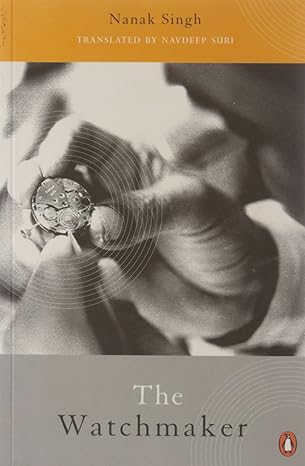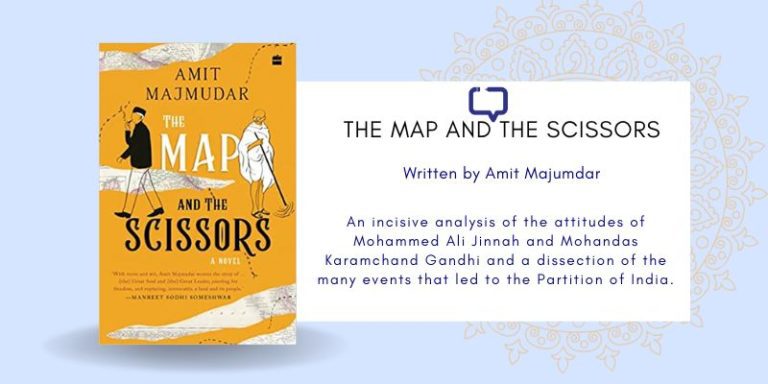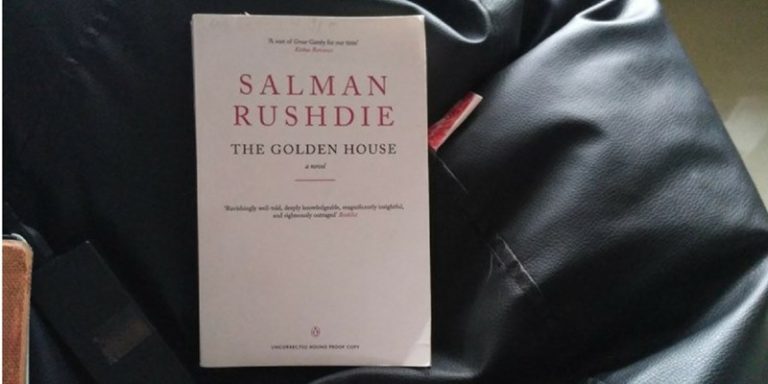Sneha Pathak reviews Nanak Singh’s The Watchmaker originally written in Punjabi and translated into English by Navdeep Suri (Penguin India, 2009)
Nanak Singh’s The Watchmaker was originally written in Punjabi with the title Pavitra Paapi and has been translated into English by his grandson Navdeep Suri. The watchmaker is the story of Kedar, or Kamaal as the author knew him, who is both – the watchmaker and the saintly sinner of this tale.
The book opens with a prologue, an introduction by the author, Nanak Singh, who tells us how he came in possession of this real story and of the man behind it. The prologue feels like a frame narrative and had there not been the author’s name and date at its end, I would have considered it fiction.
The prologue itself is so well-written that it sucks you into the book already and sets the stage for the reader to be curious about this character which Nanak Singh sketches before us in those few pages.
We encourage you to buy books from a local bookstore. If that is not possible, please use the links on the page and support us. Thank you.
The Story and Writing
The story of Kedar unfurls in Rawalpindi of the pre-partition era when the young orphan boy on the verge of collapsing from hunger gets a job as a watchmaker in a shop. What he does not know as he accepts the position is that this job is the last hope of Pannalal, a once-wealthy merchant who has fallen into penury. With mountains of debt looming ahead along with his eldest daughter Veena’s approaching wedding, Pannalal cannot face life and wanders off, leaving a letter for Kedar, blaming him for his drastic step.
Haunted by guilt upon realising what he has done, Kedar tries to locate Pannalal but fails. He then takes up the responsibility of Pannalal’s family and hides the truth of Pannalal’s disappearance from them. Even as he becomes a part of the family and receives motherly love from Maya, Pannalal’s wife, things get complicated when he realises that he is falling in love with Veena who is already betrothed to someone else. This, along with the fact that the family is in dire need of money to keep the moneylenders at bay, becomes the pivoting point of the story and leads to a series of heartbreaks and tragedies.
The Translation
The Watchmaker by Nanak Singh is essentially a book of its time. The code of morality, of what was acceptable and what wasn’t, the relationship between men and women, the idea of honour, the place of women, and the importance of marriage might feel somewhat distant to the contemporary reader who will perhaps feel the futility of the tragic decisions that come to be taken in the course of the story. But as a portrayal of the time when it was written, the book works quite well.
In its limited number of pages (the Penguin translation is less than 200 pages), it gives us a portrait of the times as well as the people who populate its pages. The part that stood out for this reader though was the astute psychological portrayal of the mental anguish of both Kedar and Veena as they come to terms with their new realities. Kedar’s attempt to battle the avalanche of his feelings for Veena, his dismay at expressing them, and Veena’s confusion and guilt bring these characters to life.
Recommended Reads: Partition Literature You Must Read
Kedar’s story can be read in many ways, depending upon a reader’s perception of his action. they might be considered heroic, tragic, self-sacrificial, or even, at a stretch, vainly masochistic. I read it like I watch so many of those old black-and-white movies –a fondness mixed with some eye-rolling dissatisfaction at the world as it was back then. Was it better then? Is it better now? Perhaps a bit of both.

P.S. There is an old Hindi film based on the book, available on Prime Video.
Favourite Quotation from Nanak Singh’s book
“He looked back at her just as he was leaving and Veena felt as if two arrows had shot out of his eyes and pierced her heart. She knew right away that this look was not from the ‘brother’ Kedar but from the ‘other’ he was now trying to be. The realization immediately made her look away.”
The Watchmaker by Nanak Singh
Have you read this heartwrenching story of unrequited love? What do you think of it? Drop a comment below and let us know!





















